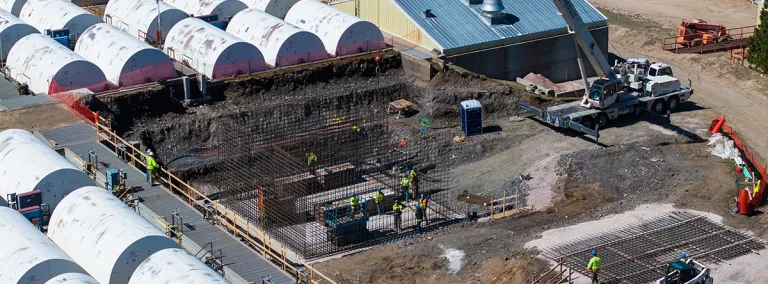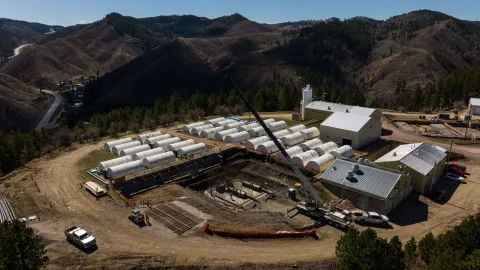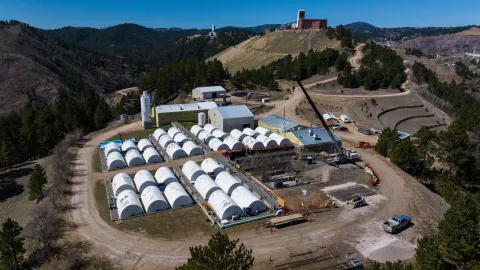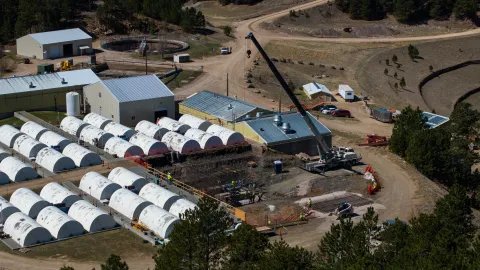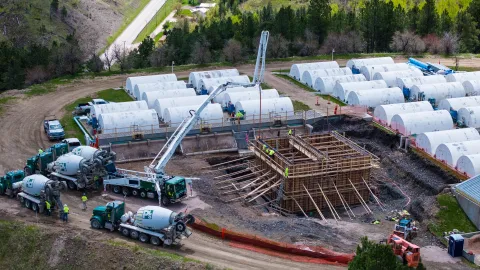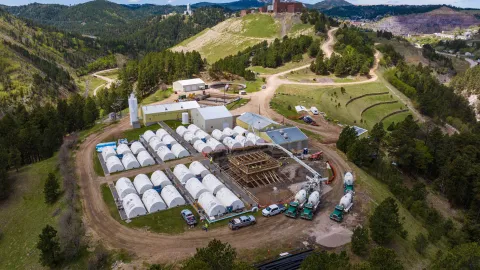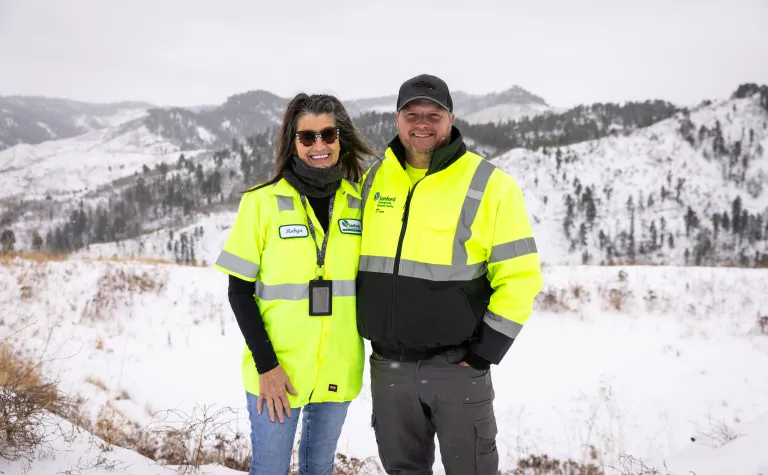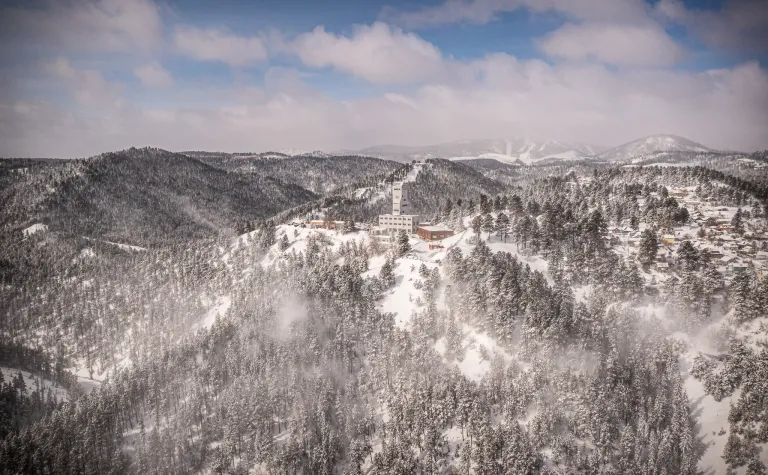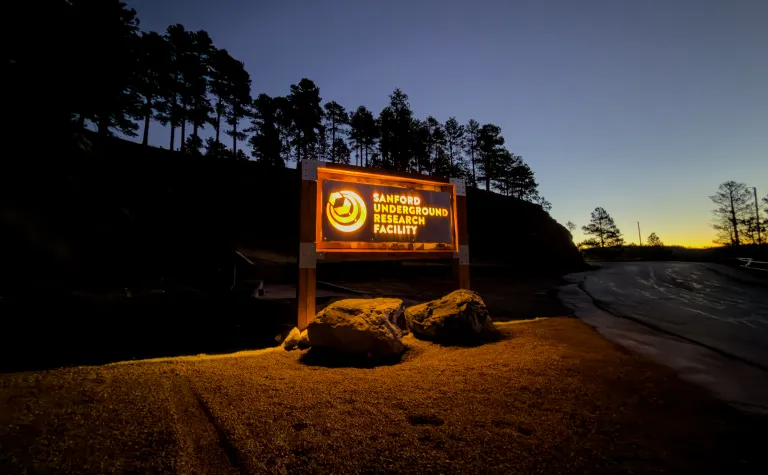SURF completes Wastewater Treatment Plant upgrade with team of South Dakota contractors
SURF recently completed a major upgrade to the wastewater treatment plant, ensuring many more years of clean water in local streams.
For nearly 40 years, a series of large cylinders — each about the size of a semi-truck trailer —have been quietly rotating in pools of flowing water on the site of the Sanford Underground Research Facility (SURF). The cylinders, called Rotating Biological Contractors (or RBCs), are a key component of the Wastewater Treatment Plant at SURF.
The RBCs are home to a unique set of microbes that break down contaminants in the water flowing through the plant. The system served both the former Homestake Mine and SURF today. Tens of billions of gallons have been cleaned by the RBCs since their construction in the 1980s.
This year, they will be shut off to make way for an improved water treatment technology.
A little history of water treatment at SURF
The biotechnology used to clean the water at SURF was invented in the Black Hills nearly 50 years ago. In the 1970s, a team of chemists working for the Homestake Mining Company discovered a set of microbes that break down the types of contaminates found in the mine tailings pond and the underground pool of water.
Back then, Homestake pioneered the idea of using microbes to clean water. The technology invented at the former mine went on to become a revolution in wastewater treatment—it was employed at sites all over the world, and the technology continued to evolve with time.
The upgraded system coming online
This year, SURF is replacing the aging RBCs with a Moving Bed Biofilm Reactor (MBBR). Rather than housing microbes on large rotating cylinders, the new system gives them a home on tens of thousands of small plastic disks that tumble through aerated pools — resembling giant bubbling hot tubs.
“This is just a new home for the bugs, or the bacteria that replace the RBCs,” said Todd Hubbard, a senior mechanical engineer at SURF who led the construction of the MBBR.
Hubbard emphasized this project exemplifies the facility’s ongoing commitment to environmental responsibility.
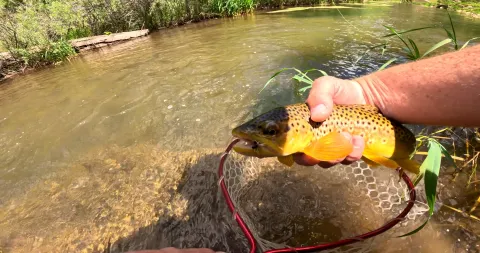
Trout like this one, caught by Stephen Kenny, are now common in Whitewood Creek downstream from SURF.
Photo by Stephen Kenny
“Stewardship of the environment at SURF is done primarily through our care for the water. Water is the greatest resource, and we're taking our job very seriously of properly treating this water and discharging it. As the years passed with no violations and continued success operating this plant just shows our commitment to the environment,” said Hubbard.
The construction phase involved significant challenges, including the safe removal of the legacy system and excavation for the new installation.
“This has been a challenging project, and it's turned out very successful. We had a huge job in removing the old RBCs and then safely excavating down to put this new MBBR basin in place. There were absolutely zero injuries during the construction of this MBBR plant,” Hubbard said.
A project that highglights local economic impact
Hubbard points out that SURF partnered exclusively with South Dakota-based companies to complete the project. This effort is just one example of the $2 billion economic impact SURF is projected to have on the state economy this decade.
“Banner was the primary engineering company designing this. They're out of Brookings, South Dakota. In fact, they designed the original water treatment plant that we're located at now. They designed that in the late 70s, and they had all the blueprints and drawings and specs from the original water treatment plant, so they had a wealth of information to help them with the design. TSP engineering out of Rapid City did the electrical portion of the engineering. Ultimately, it was built by RCS Construction out of Rapid City. So, this was a 100% South Dakota effort to complete this project,” Hubbard said.
Hubbard adds that besides. Banner, TSP, and RCS construction, Hauck Electrical & Controls out of Belle Fourche, and Dakota Pump out of Rapid City also served as contractors on aspects of the project.
With the upgraded system coming online soon, SURF is positioned to maintain high water quality standards into the long term future.
“This plant allows us to meet all of our discharge permits and discharge it down to Whitewood Creek, which is a cold water fishery. So, water treatment is very critical and crucial to protect this waterway,” said Hubbard. “Anybody that goes down to the creek and decides to drop a line and do a little fly fishing, those trout will be there for them in the decades to come.”
